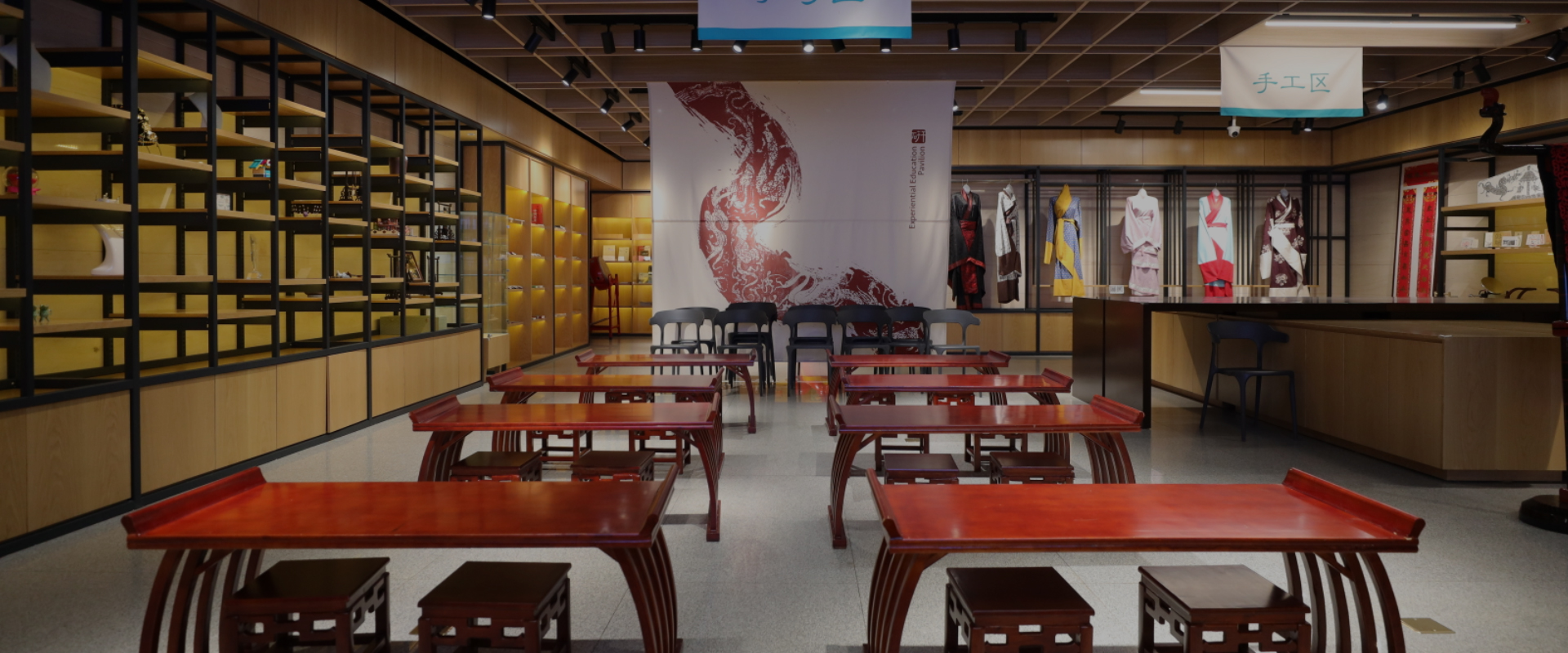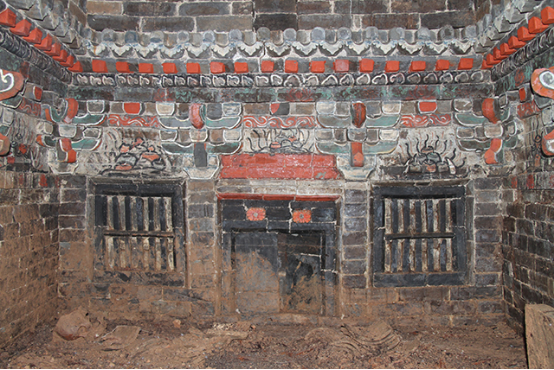

Xuzhou Han Culture Academic
Submit
【XU BO】Maximum daily capacity: 10,000 person-times Instantaneous capacity: 2,500 person-times

Longtou Mountain is located about 10 kilometers southwest of Guanshan Town, Suining County, Xuzhou City. It is a large limestone hill. Due to the long-term quarrying of the mountain, the mountain is mostly damaged. The government of Guanshan Township, Suining County has built an edible fungus cultivation base in Longtou Mountain. On March 15, 2013, a brick room tomb was found during the construction of the Longtou Mountain edible fungus base. The top of the burial chamber was destroyed. The mound where the tomb is about 3 meters high is on the east slope of the dragon head. After the report asked the higher authorities to agree, the Xuzhou Museum and Suining Museum formed a joint archaeological excavation team to carry out a rescue excavation of the tomb from March 16 to May 14. After the excavation was completed, the Xuzhou Museum's Cultural Relics Protection Department invited the experts of the Shaanxi Provincial Archaeological Research Institute to conduct on-site guidance for the overall removal and protection of the tomb.
The tomb is with a wood-like structure of 0.6 to 1.8 meters. The tomb is 5.87 meters long from north to south and 2.86 meters wide from east to west. The burial room was buried with blue bricks in the tomb. There is a mound of soil on the tomb. The mound is due to long-term rain erosion. The tomb is composed of a tomb, gatehouse, gangway, front room, stone door, and back room. The orientation is 110 °.

The cemetery opened in the northeast and was sloped. The north was destroyed. The upper mouth width is 0.8, the lower width is 1.3, the residual length is 4.5 meters, and the bottom of the tomb is 2.8 meters from the original surface. The gatehouse is in the form of imitation wooden structure, with square door frames, one row of bricks on the east and west sides in the door frame, and a brick vaulted tomb door in the upper part. The bottom of the tomb door is 0.9 wide and 1.4 meters high. The door is made of three-layer bricks with four bricks protruding in the middle. Each brick is embossed with a bas-relief in the center of the petals on the facade. From right to left are "gold", "public", and "first" ,"tomb". A flower pattern is painted with red, black, and white paint around it. Above the door frame is a group of brick carvings, which are divided into three parts by two bricks with lantern-shaped patterns. The east and west are square brick carvings with carved arcs, moire and an unopened flower. In the middle are two brick carvings carved with two sets of peony patterns. There are red cinnabar on the brick carving, and most of them have fallen off. Above the door, there are two brick carving arches, and a circular brick carving between the two arches. There is a sika deer embossed in the middle of the round brick carving, and flowers are carved on the upper part and surroundings. The sika deer's body is painted with red cinnabar, the flowers are also painted with red cinnabar, the antlers and the spots on the body are painted white, and most of them have fallen off. There are two layers of painted flower patterns on the bucket arch. On top of the painted beams, there is a square rafter carved from a layer of blue bricks. Above the rafters is a layer of brick carved "V" -shaped dripping water. Carved into petals. Two drops of water were pressed into a circular arc of pressed bricks. There are ridges on the middle, and two ridge tiles with floral patterns on both sides are carved in the middle. The door of the tomb is arched, the martyrdom is 0.72 long, 0.9 wide, and 1.4 meters high. The tomb door is blocked by four slabs standing from the bottom up.
The front room is square. The north-south length is 1.82 meters; the east-west width is 1.3 meters, and there is a door in the middle of the east and west sides. There are two doors in the door frame, one is closed, and the other is half-open. In the middle of the forehead there are two brick carvings with painted flowers protruding from the facade. There are windows on the north and south sides of the door, and a layer of black and white red paint is used to draw a flower pattern on the door and window. Above the floral pattern are two bucket arches painted with green, red, and white pigments. Between the two arches are black orange red painted sacrifices. There are two layers of painted flower patterns on the bucket arch. On top of the painted beams, there is a square rafter carved from a layer of blue bricks. Above the rafters is a layer of brick carvings. Two drops of water were pressed into a circular arc of pressed bricks. On top of the arc-shaped pressed bricks, there is a dome roof that gradually retracts upward. The bottom of the front room is tiled with square tiles in the north-south direction.
South of the front chamber is the stone gate leading to the back chamber. On the lintel stone, the four characters of "time", "thought", "spirit" and "Hall" are engraved. There is a flower pattern carved between the four characters. Three groups of patterns are engraved on the right doorpost. The upper part is engraved with the cloud pattern, and the middle circle is engraved with the word "day", the middle part is engraved with the pattern of lion standing with head raised and mouth open, and the lower part is engraved with the word "A beam of light goes through the door". Three groups of patterns are engraved on the left doorpost, the upper part is engraved with cloud pattern, the middle circle is engraved with the word "Moon", the middle part is engraved with the pattern of lion standing with head raised and mouth open, and the lower part is engraved with the word "the third Sheng(means degree in Fengshui) of the western road". In the middle of the right side door, there is an engraved description: "to see through the four ideas and return to the nature", "April 23, Wanli looks at the sunrise". In the middle of the left side door, there is an engraved description of "free from three things of life and career is in Futuan". The right side is opened and the upper part of the door pivot is fastened with a square brick. Above the lintel is a dome that recedes upward.
The plane figure of the back chamber is square, 2.42M long from north to south, 2.3m wide from east to west, and 2.86m high. There is a small niche in the middle of the East and west walls. The niche is 0.4 in width, 0.56 in height and 0.14 in depth. There is a door in the middle of the south wall. There are two doors in the door frame. One is closed and the other is half open. There are two brick carvings with colorful flowers in the middle of the forehead. A window is arranged on both sides of the door. Above the doors and windows are two arches painted with green, red and white pigments. Between the two arches are white, black, orange red and other painted offerings. There are two layers of girders with colorful flower patterns on the top of the bucket arch. On the top of the girders are square rafters carved by blue bricks. On the top of the rafters are a layer of "V" shaped brick which water drops in the middle and are slightly concave into an arc flow, and on the bottom are carved into petals. Above the arc-shaped brick is a dome which is gradually closed upward. In the middle of the dome is a small niche, 0.22 wide, 0.28 high and 0.1M deep. The bottom of the back chamber is paved with square bricks in the north-south direction. Two coffins are placed at the bottom of the tomb, with clear marks. The coffin is 2.1 long, 0.8 wide and 0.08m thick. There is a corpse in each coffin. It's well preserved in the East and severely decayed in the West. All of them were buried with straight limbs. Male in the East and female in the West. Because of a large amount of seepage in the tomb, part of the bones and coffins are displaced. At the head of the two coffins, there are some small tiles piled on the coffin when they were buried. A large number of coins are scattered in and between the two coffins. In the west side of the back room, between the coffin and the small niche, a block of epitaph brick is placed in the north-south direction. There are traces of writing in cinnabar on both sides, which is not clear due to the long-term water immersion.
Only pieces of 165 coins, such as Xining Chongbao, Yuanfeng Tongbao and Shengsong Yuanbao, were unearthed in the back room of the tomb.
59 pieces of "Xining Chongbao" coins. According to the different characters on the coins, it can be divided into two types.
Type I: 23. the characters are written in seal script. No words on the back. M: 1 diameter 2.8, diameter 0.7 cm.
Type II 36. the characters are written in official script. No words on the back. M: 12 diameter 2.8, diameter 0.8 cm.
91 pieces of "Yuanfeng Tongbao" coins. According to the different characters of on the coins, it can be divided into two types.
Type I: 50. the characters are written in seal script. No words on the back. M: 3. Diameter 2.8, diameter 0.7 cm.
41 pieces of Yuanfeng Tongbao coins. The characters are written in running script. No words on the back. M: 14 diameter 2.8, diameter 0.7 cm.
1 piece of "Shengsong Yuanbao" (M: 5). the characters are written in seal script. No words on the back. M: 5. Diameter 2.8, diameter 0.7 cm.
It is very rare in the Ming Dynasty tombs excavated in Xuzhou not only because the doors of the tomb imitate the wooden structure, the front and back chamber structure of the courtyard style but the clear inscription of the stone gate. According to the characteristics of the two coffins and the bones in the back chamber, it can be known that the tomb is a joint burial tomb of Jin's husband and wife. According to the couplet on the gate post, we can know that the couple of Jin family, the tomb owner, should be Buddhist monks who practice at home. The inscription of the stone gate clearly records that the tomb was buried on Wangri(the 15th day of a lunar month) April , the 23rd year of Wanli, Ming Dynasty. The shape and structure of the tomb are complete, the burial time is clear, the preservation is good, and the brick carvings are beautifully painted, which provides precious physical materials for the study of the burial system, burial customs, architecture, painting and religion in Ming Dynasty.